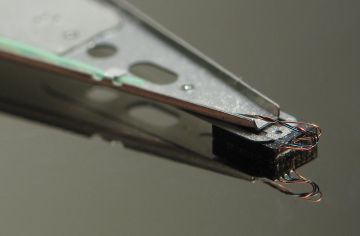 The hard drive industry was hit hard by heavy flooding in Thailand back in 2011. Several plants, providing vital components for Seagate and Western Digital, temporarily went off line following the disaster. The shortage caused a massive surge in hard drive prices and its effects are still being felt.
The hard drive industry was hit hard by heavy flooding in Thailand back in 2011. Several plants, providing vital components for Seagate and Western Digital, temporarily went off line following the disaster. The shortage caused a massive surge in hard drive prices and its effects are still being felt.
Keen to provide a bit of perspective, Xbit Labs compiled an interesting chart of hard drive average selling prices, based on data from Seagate’s and Western Digital’s SEC filings over the last four years. Pre-flood average selling prices (ASPs) were between $45 and $55, but they soared to the $70 mark in Q4 2011. The recovery was painfully slow and although some rather optimistic analysts claimed the market would stabilize by mid-2012, we are still feeling the muddy aftertaste of Thai flood water.
According to the latest figures, average selling prices decreased to $62 – $63 per unit and they are still considerably higher than pre-flood prices. Prices are currently at 2008 levels, which means they are still too high for comfort. Of course, the effects of the global economic downturn and recent PC slump were not factored into 2008 pricing and ASPs should be significantly lower today, even after they are adjusted for inflation.
This is bad for consumers and system integrators alike, as they have to adjust their own margins to compensate for the higher prices. What’s more, hard drive makers are probably not too keen to reduce their ASPs, as further cuts would negatively impact their margins while they are still reeling from flood-related losses. Western Digital CEO Stephen Milligan confirmed the company has more capacity, but it is throttling it to what it sees as demand, which is a polite way of saying WD is trying to keep prices artificially high.
It is even worse for end consumers looking to upgrade their PCs or get some cheap portable storage. Back in mid-2011, per-terabyte retail prices were at their lowest point, about €25 in European markets and a 2TB 3.5-inch drive cost roughly €50. By November 2011, per-terabyte prices hit €35 to €38 and they went on to peak at €50 to €55 by April 2012. Retail prices today are still significantly higher than in 2011 and they are in the €38 to €40 range across Europe.
Xbit also concluded that ASPs peaked in Q4 2011. In the meantime, SSD prices continued to tumble, but SSDs are still too costly to completely replace traditional hard drives. However, SSD shipments are expected to double in 2013, as they are the preferred storage option for Ultrabooks.
Hybrid drives are also entering the fray and they can be found in quite a few budget ultrathin notebooks, although their days in proper Ultrabooks are numbered. So far Seagate is the only hard drive maker to offer 2.5-inch hybrid drives in retail, but Western Digital is also entering the market and it showed off its first consumer friendly hybrid drives at CES.
Traditional hard drives are not going anywhere yet and it is evident that WD and Seagate have enough room to maintain a huge price advantage over SSDs, as they are artificially inflating prices. They can’t bridge the performance and power consumption gap, but by offering hybrid drives they can bring the best of both worlds to value-minded consumers.





